What is CDI?
Veritone’s patented CDI (Cooperative Distributed Inferencing) technology forms the backbone of Veritone Energy Solutions, delivering real-time dynamic modeling and control that ensures predictable energy distribution and resilience across the grid.
CDI for Autonomous Energy Management
CDI is the grid modeling and learning core of Veritone Energy Solutions. CDI leverages forecast data and rules to build and continually update device state models, which are then used to intelligently control edge devices.
CDI self-learns and adapts to ensure all energy devices in a microgrid, such as solar and battery power, deliver optimal energy at peak demand times and continue to operate autonomously if isolated from the main grid due to extreme weather or natural disaster.
The Veritone Forecaster, Optimizer, and Arbitrage solutions leverage CDI to perform their functions. CDI works hand-in-hand with the Veritone Controller solution, which is a dynamic, incremental feedback control system that obtains sensor-based environmental information and produces actions to control a network of electric microgrid devices including distributed loads, solar panels, batteries, and utilities. See how these four Veritone Energy Solutions work together.
Why CDI is Unique –
Real Time Dynamic Modeling
Adaptive Models
Veritone’s patented CDI (Cooperative Distributive Inferencing) technology uses real-time dynamic modeling to dramatically improve the performance of complex grid operations. The CDI Tomograph continuously constructs a control model of a complex system in real-time as the system evolves with changing conditions.
Other solutions on the market simply learn static model parameters, while Veritone applies dynamic, adaptive learning to models. With CDI, the system is always operating at peak performance as each device’s edge controller gets its instructions from the most accurate model possible at any given time considering changing environmental conditions.
Distributed Agents
CDI also uses a distributed agent-based approach that reduces overall processing requirements while drastically improving latency. Systems and devices including batteries, solar inverters, and wind turbines are synchronized both with each other and the grid, allowing for autonomous energy grid management via Veritone’s predictive intelligent controllers, and resulting in estimated energy efficiency improvements in the range of 15-25%.
Integrated Solution
Unlike competitive energy offerings that focus on a single aspect of energy management, such as:
- Forecasting (price, demand, generation)
- Optimal economic dispatch of energy from multiple distributed energy resources (DER’s)
- Real-time optimal battery control
- High-frequency energy arbitrage (buy/sell) for the wholesale energy markets
Veritone’s CDI-based energy solutions provide all needed capabilities in a single integrated system, fusing together real-time forecasting, economics, rules, and real-time learning for device and network model building/updating to deliver autonomous energy grid management and control.
CDI and Edge Controller Interaction
CDI uses hard and soft rules for edge controller components, along with a mean field-based dynamic synchronization of the network, to perform a real-time construction and updating of device models under control via a tomograph. CDI then generates a tracking signal representing the most optimal model at any point in time. That model combines dynamic, optimal demand satisfaction with rules describing device longevity, operational limits and other device characteristics.
This CDI tracking signal is sent to the edge controller, which generates an implementable signal that controls a physical energy device.
Distributed CDI agents are dynamically synchronized through the mean approach with a blackboard architecture that collects and transfers information and ensures optimization and synchronization of energy across a distributed energy network.
Key Technical Components
The Veritone Energy CDI and edge control system combines data acquired in its ML-based knowledge base, distributed CDI agents, edge controllers and sensors to control components in the network for optimal energy dispatch.
Key technical components of the overall Veritone Energy CDI and edge control system include:
- Rule translator: Converts domain rules, including absolute, hard and soft rules, into potential equations and inequalities used by CDI agents.
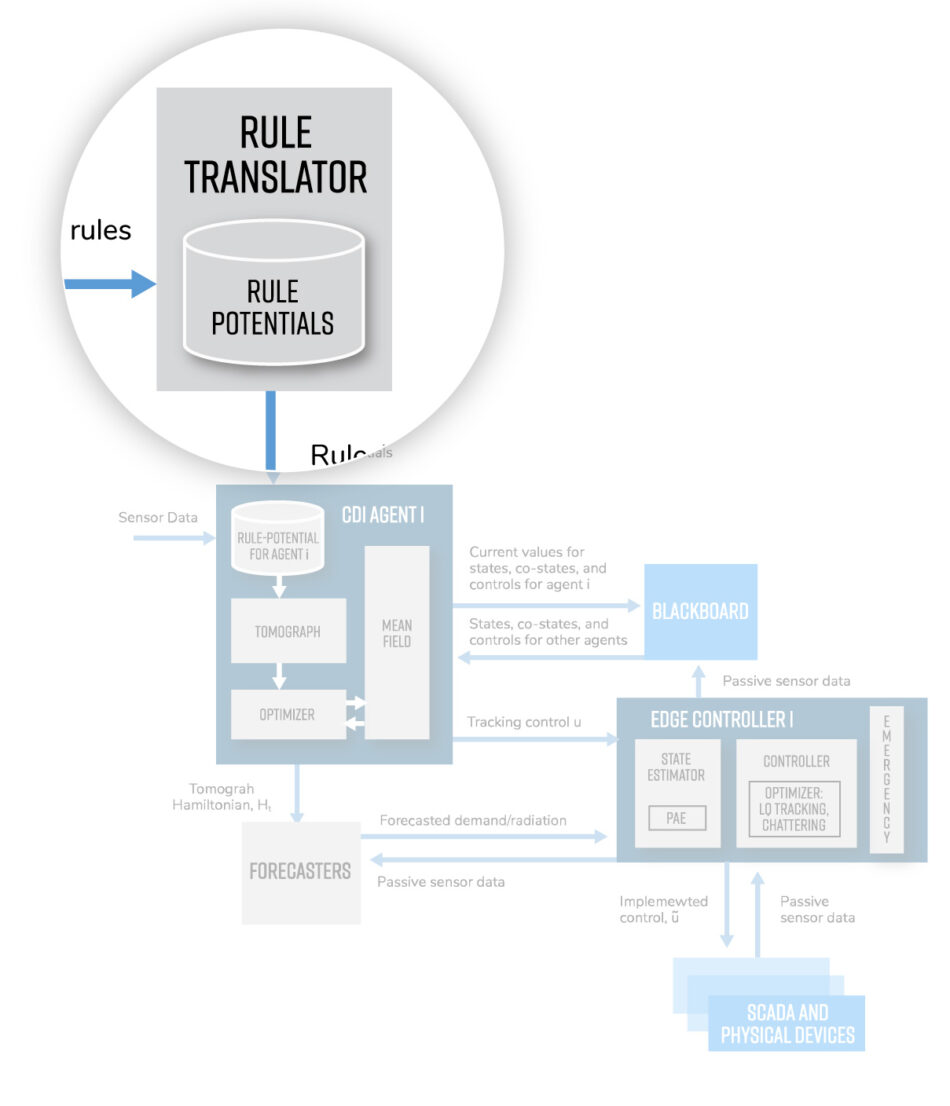
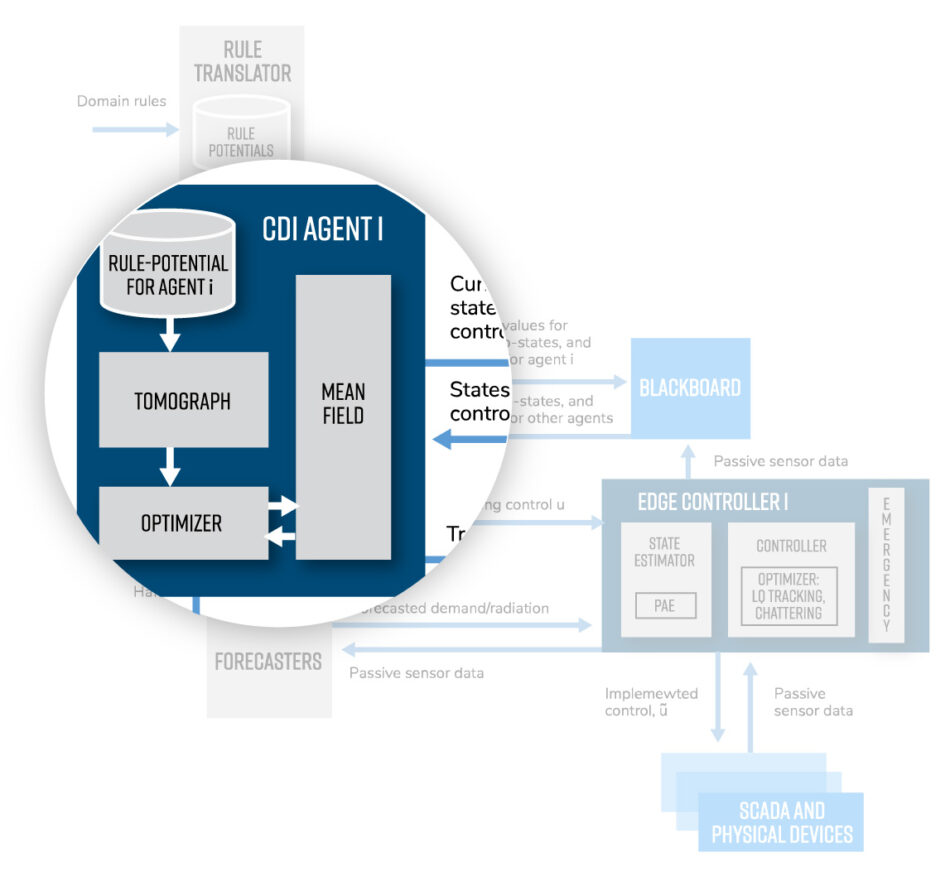
- CDI agent:
- Rule potential: Local representation (rule-potentials) of controlled components associated with an edge controller
- Tomograph: Learns and updates a model of the device under control, based on a data Hamiltonian with initial and terminal conditions for states, co-states and controls, for a CDI agent by probing with active sensor controls.
- Optimizer: Continuously generates a policy, using a sliding window, for a dynamic system that incorporates rule-potentials to satisfy operational and behavioral goals.
- Mean field: Synchronizes and optimizes distributed CDI agents by projecting states of the entire network onto local CDI agents.
- Edge controller:
- State estimator: Estimates the state of the system, including discrete and continuous modalities, using an incremental state estimator. Also uses a parameter adaptive engine (PAE) to learn parameters.
- Incremental controller: Determines the optimal device control signal that tracks an input signal (for example, power rate or power) using a proportional linear-quadratic (LQ) tracker, a PID LQ tracker, or a chattering optimization algorithm.
- Emergency control system: A controller that can operate independently in an emergency situation when there is no connection to the network and can reconcile with the network when connectivity is restored.
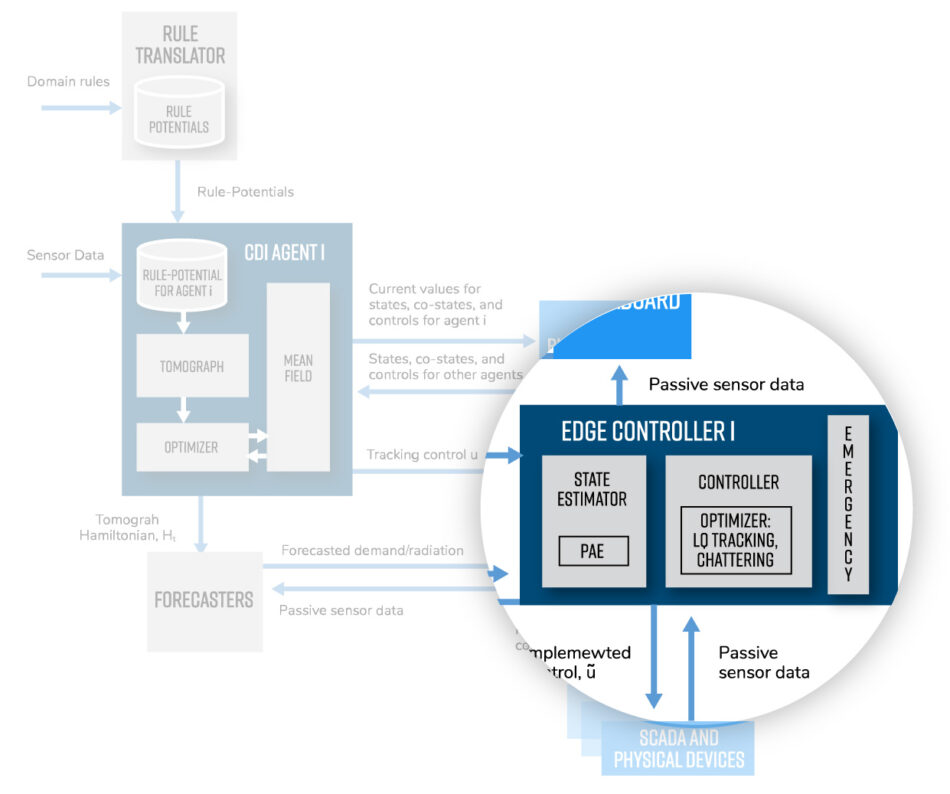
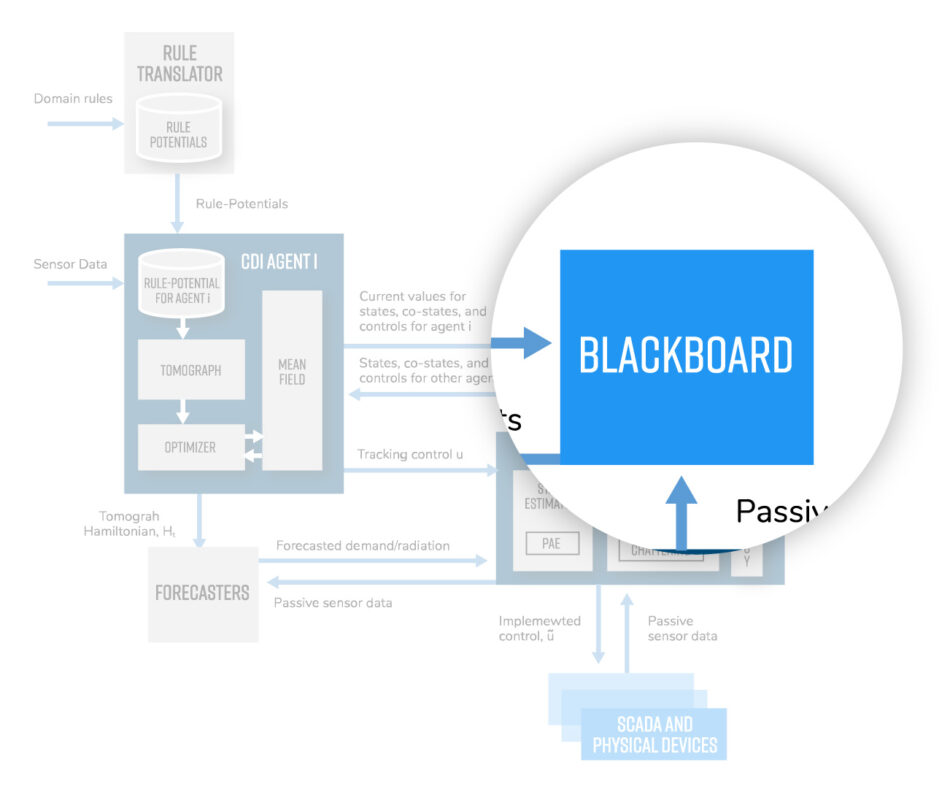
- Blackboard: The blackboard provides flow of information, including state and synchronization data, between agents.
- Forecaster: Uses historical and current sensor data to forecast future energy factors, such as demand and irradiation, to be used in the edge controller. Leverages multiple trainable models including a parameter adaptive engine (PAE).
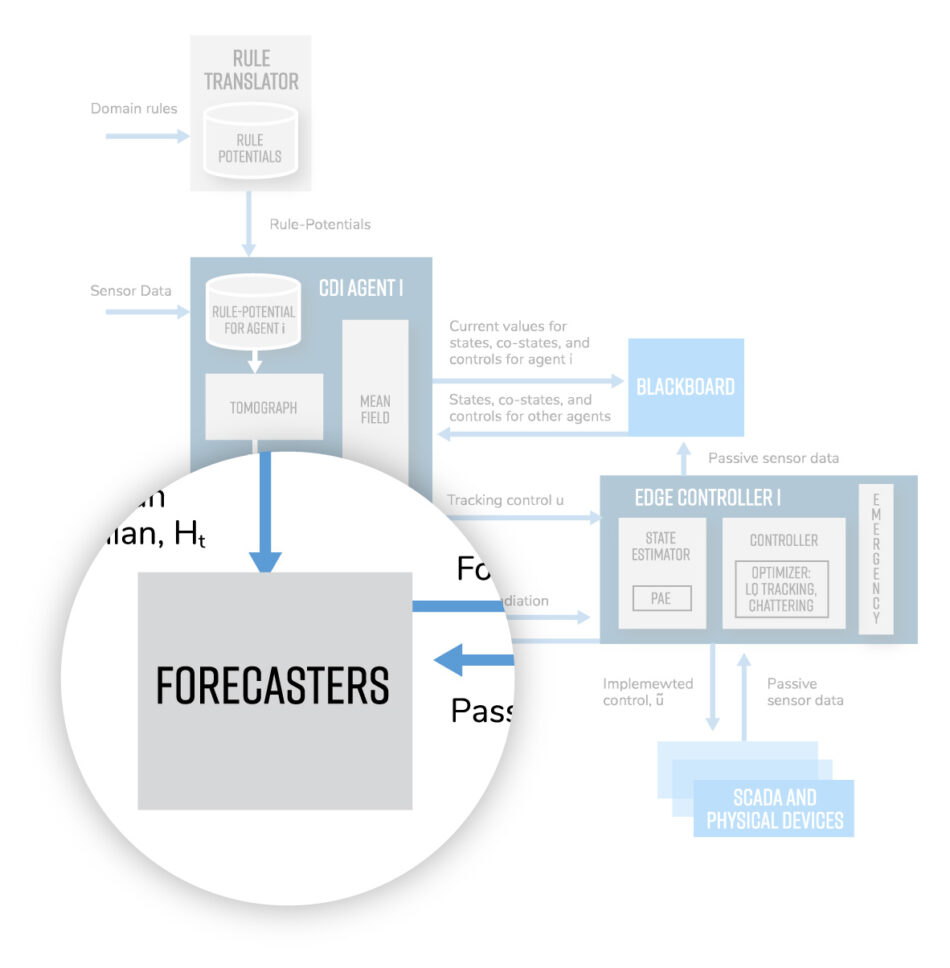

Resources
Downloadable Resources
Learn more about how Veritone’s AI solutions can help you and your team optimize your performance.
